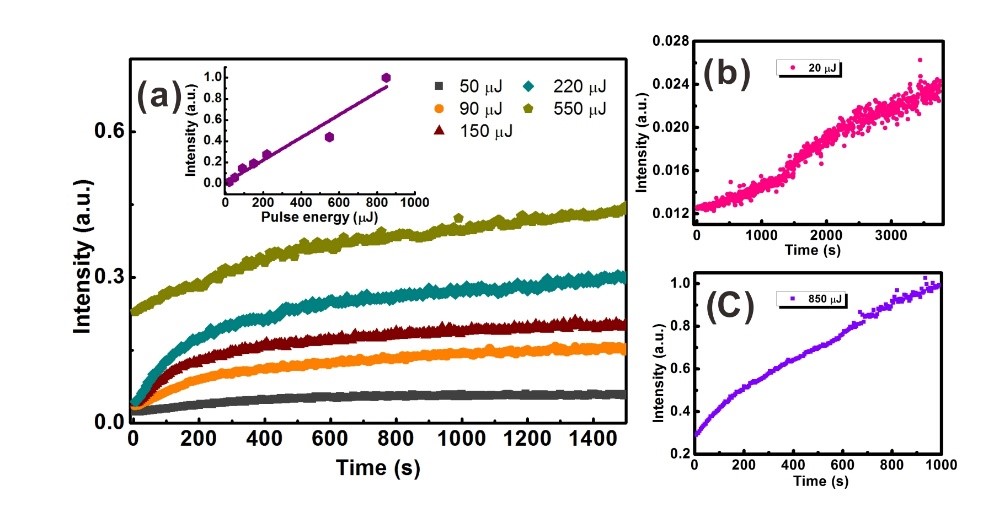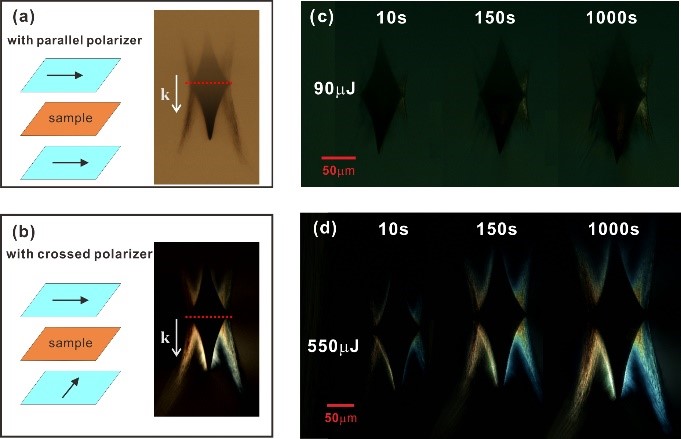White-light continuum generation is a universal process that occurs when intense ultrashort laser pulses interact with transparent gases, liquids and solids. The multicolored light possesses many of the same desirable properties as conventional laser: intense, collimated and coherent. Therefore, it has found wide applications ranging from frequency metrology, spectroscopy of semiconductor microstructures and photonic structures, optical coherence tomography to time-resolved spectroscopy.
A white-light continuum is believed to be polarized in the direction of the incident pump laser polarization for an isotropic medium.
Recently, the research group in Shanghai Institute of Optics and Fine Mechanics (SIOM), Chinese Academy of Sciences (CAS), reported self-induced birefringence of white-light continuum generated by interaction of focused femtosecond laser pulses with fused silica. The result was published in High Power Laser Science and Engineering.
In their experiment, a Glan–Thompson polarizer was used to ensure that ultrafast laser beam was strongly linearly polarized. A lens focused the light beam into a bulk fused silica to generate white-light continuum and another Glan–Thompson polarizer with polarization orthogonal to the input polarizer served as an analyzer. At the end of the light path, a beam profiler or a spectrometer was used to detect the transmitted signal of white-light continuum.
Researchers found that the generated white-light continuum was synchronously modulated anisotropically while propagating in fused silica. Time-resolved detection confirmed that self-induced birefringence of continuum showed a growth and saturation feature with time evolution.
Further experiment demonstrated that, by adjusting laser energy, the transmitted intensity of continuum modulated by self-induced birefringence also varied correspondingly. Morphology analysis with time evolution indicated that it was the focused femtosecond laser pulses that induced anisotropic microstructures in bulk fused silica, and the anisotropic structures at the same time modulated the generated continuum.
These properties may be useful for fabrication of polarization-dependent devices.
This work is supported by the National Key Research and Development Program of China, and National Natural Science Foundation of China.

Growth and saturation feature of the transmitted signal of the generated continuum. (Image by SIOM)
Optical images of the femtosecond laser induced structure. (Image by SIOM)
Article website:
https://doi.org/10.1017/hpl.2020.18
Contact: CAO Yong
General Administrative Office
Shanghai Institute of Optics and Fine Mechanics, CAS
Email: caoyong@siom.ac.cn